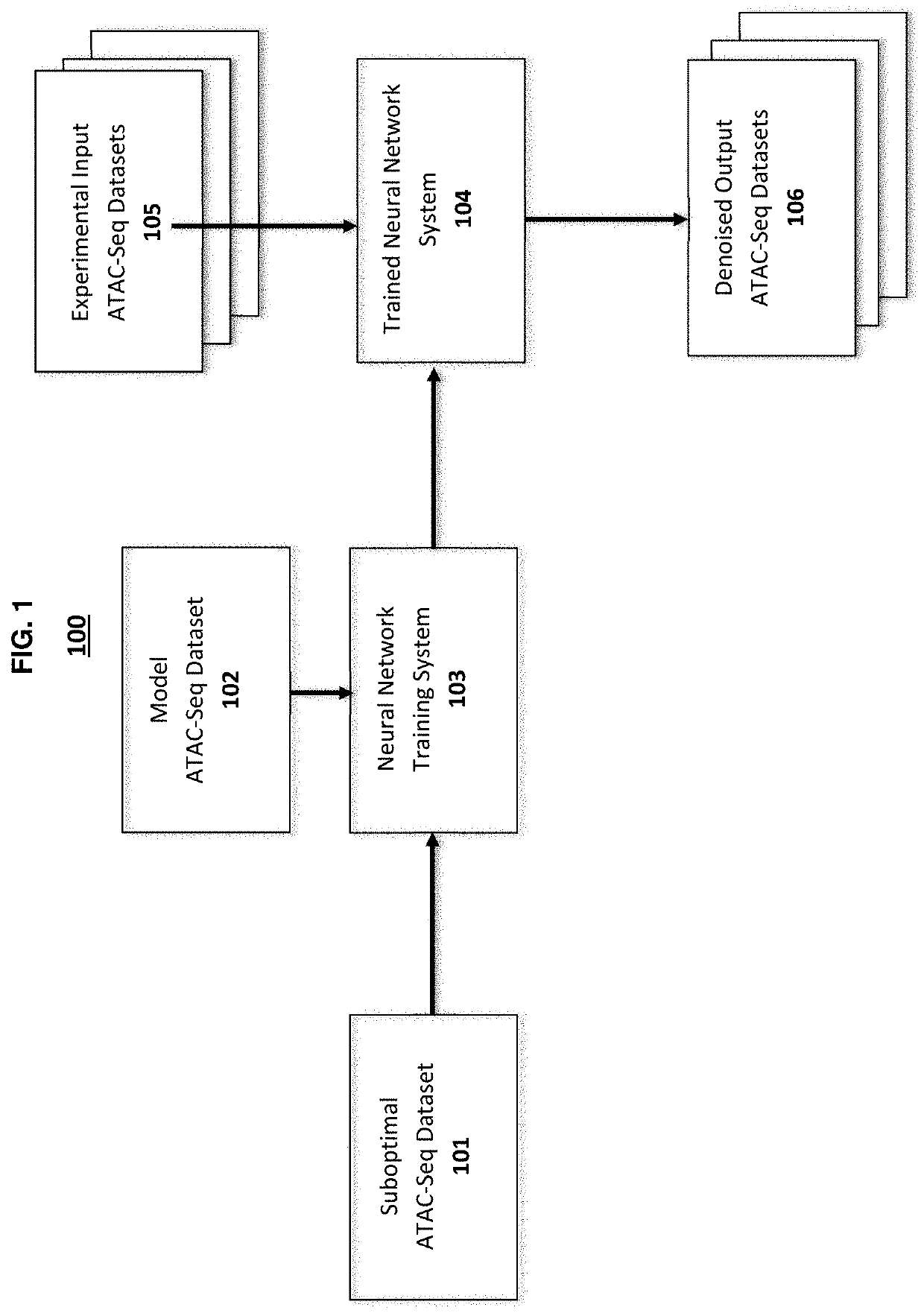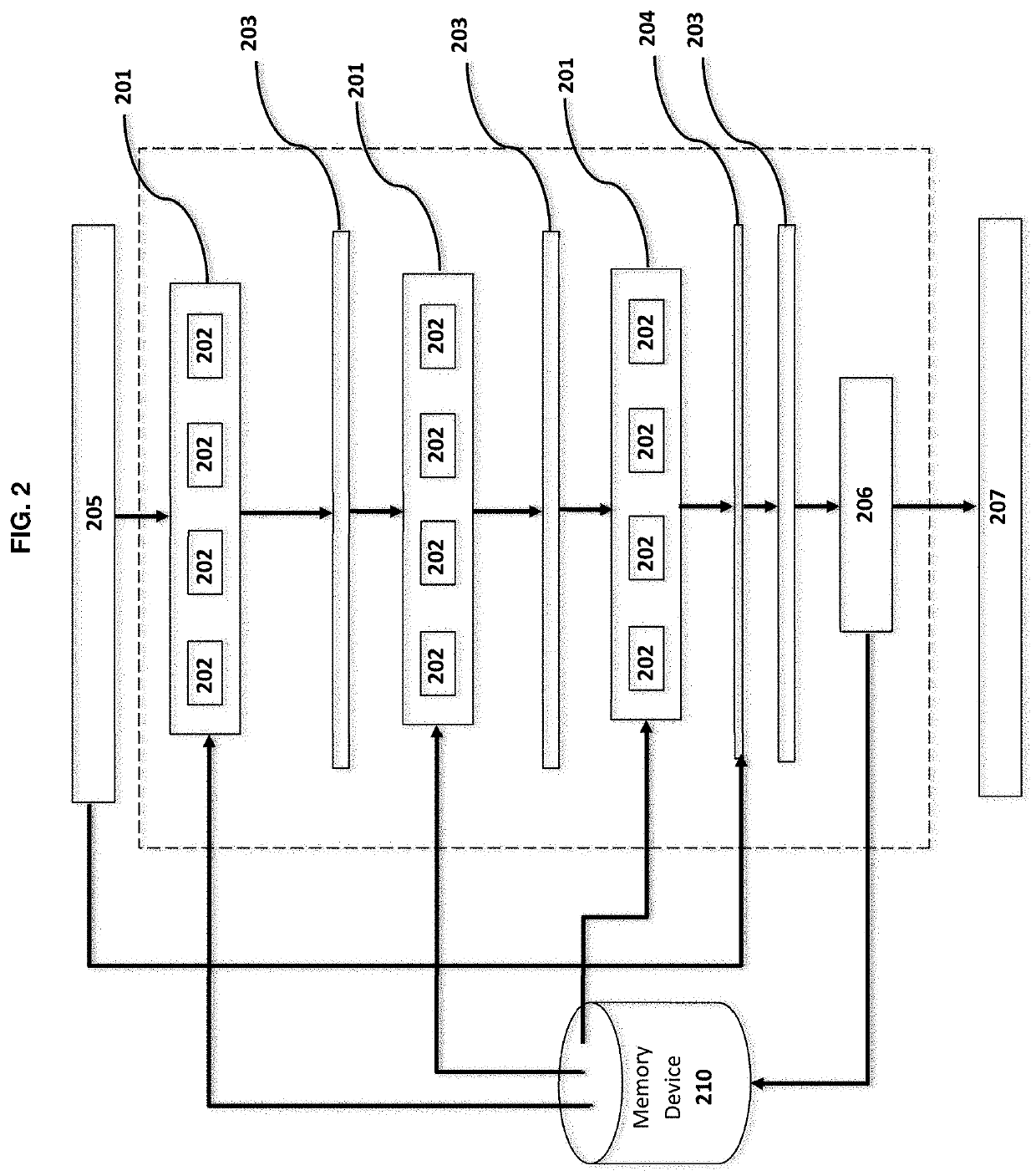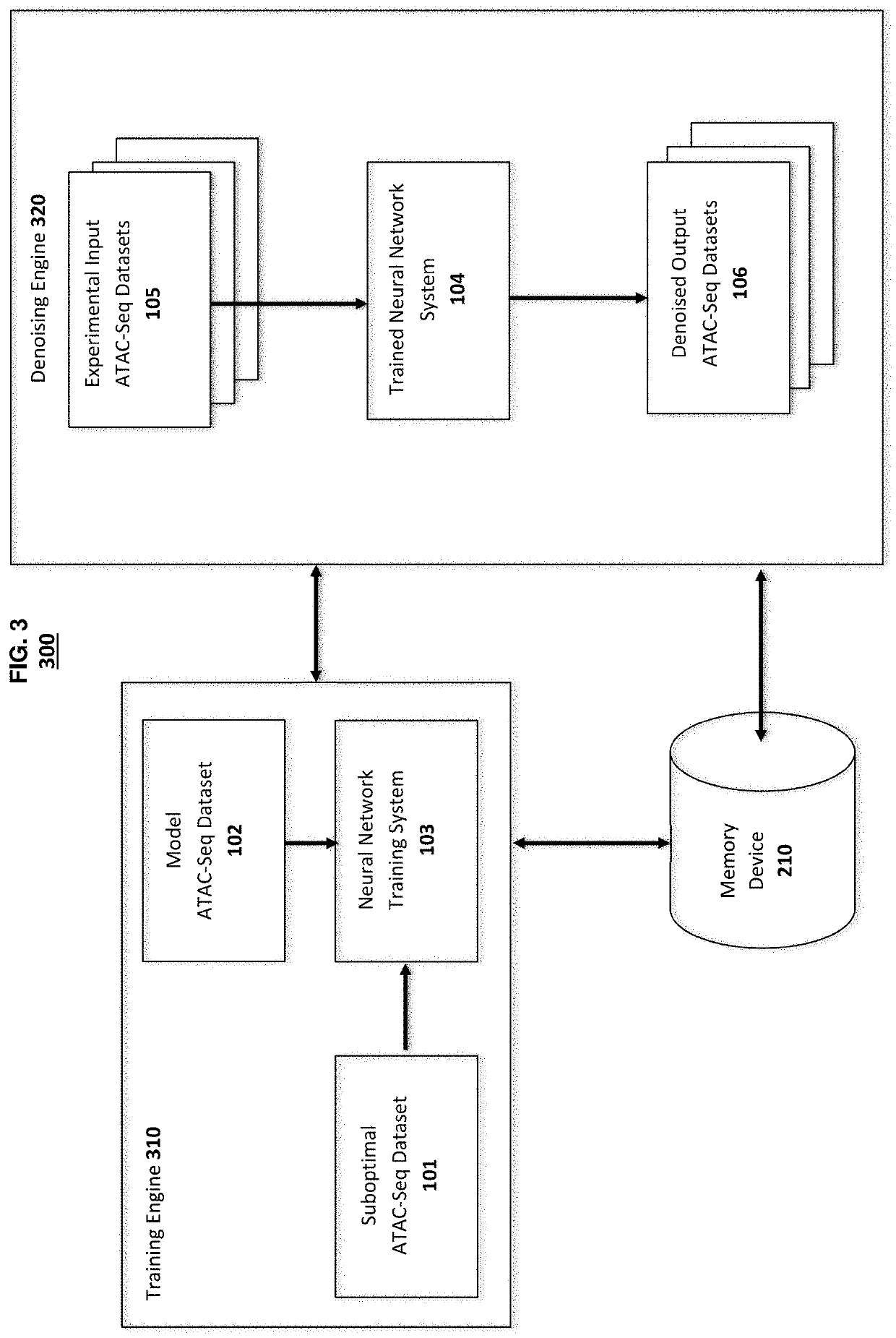Denoising ATAC-Seq Data With Deep Learning
a technology of deep learning and atacseq, applied in the field of denoising atacseq data with deep learning, can solve the problems of requiring intensive analysis, tens of millions of ngs reads, and the vast majority of it is still not fully understood, so as to improve denoising and reduce the time and cost of performing.
- Summary
- Abstract
- Description
- Claims
- Application Information
AI Technical Summary
Benefits of technology
Problems solved by technology
Method used
Image
Examples
example 1
Neural Network to Denoise Suboptimal ATAC-Seq Datasets
[0101]This example illustrates the use of methods and systems of the present disclosure to prepare a trained neural network and use it for denoising an ATAC-seq dataset.
[0102]ATAC-Seq Datasets:
[0103]Suboptimal and model datasets from ATAC-seq used in the training and testing of the denoising system are obtained by carrying out ATAC-seq experiments using well-known techniques or can be obtained from the publicly available databases such as ENCODE Project (www.encodeproject.org). ATAC-seq datasets used for training and testing the denoising process are arbitrarily chosen from experimental datasets obtained from different types of human tissue.
[0104]Protocols, materials, reagents, and experimental parameters used to prepare tissue samples and carry out the ATAC-seq experiments protocols are available at the ENCODE Project site (www.encodeproject.org). Additionally, workflow and scripts for processing the sequence reads and preparing...
example 2
ural Network Trained on ATAC-Seq Data from a Different Cell-Type to Denoise Suboptimal ATAC-Seq Data
[0114]This example illustrates the use of methods for denoising an ATAC-seq dataset across cell-types. Briefly, a trained neural network is prepared by training with sample suboptimal ATAC-seq datasets obtained from a range of human tissue types using the same general methods described in Example 1. The optimized neural network then is used to denoise suboptimal ATAC-seq datasets obtained from two human tissue types not used in training the optimized.
[0115]ATAC-Seq Datasets:
[0116]Suboptimal (5 M reads) and model (50 M reads) ATAC-seq datasets are obtained from ATAC-seq experiments carried out on samples from the following human tissues: coronary artery, right atrium auricular region, stomach, testis, tibial nerve, left heart ventricle, and Peyer's patch.
[0117]Neural Network Configuration and Training:
[0118]The neural network architecture is as described in Example 1. Training also is ...
PUM
| Property | Measurement | Unit |
|---|---|---|
| length | aaaaa | aaaaa |
| residual | aaaaa | aaaaa |
| receptive field size | aaaaa | aaaaa |
Abstract
Description
Claims
Application Information
 Login to View More
Login to View More - R&D
- Intellectual Property
- Life Sciences
- Materials
- Tech Scout
- Unparalleled Data Quality
- Higher Quality Content
- 60% Fewer Hallucinations
Browse by: Latest US Patents, China's latest patents, Technical Efficacy Thesaurus, Application Domain, Technology Topic, Popular Technical Reports.
© 2025 PatSnap. All rights reserved.Legal|Privacy policy|Modern Slavery Act Transparency Statement|Sitemap|About US| Contact US: help@patsnap.com



